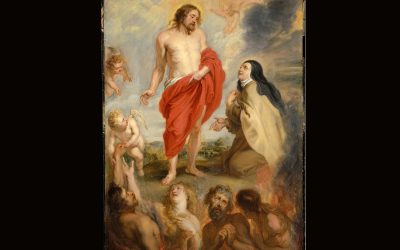By Amber Kinloch
“Previously, I think I had a more individualistic perspective on the virtues. Prudence, fortitude, temperance, justice—these were noble qualities each person needed to be a good Christian. But the emphasis was on the self: one needs to grow in virtue for the sake of his own moral and spiritual progress” (The Art of Living, pg. 2).
This incisive quote by theologian and author Edward Sri captured my attention. Like him, I’ve long thought of cultivating the virtues as a personal pursuit. I’ve given far less consideration to how my leading a virtuous life (or not) impacts other people.
Sri’s book The Art of Living: The Cardinal Virtues and the Freedom to Love has encouraged a shift in my perspective. Drawing on St. Thomas Aquinas’ Summa Theologica, Sri delves into the cardinal virtues and their associated subvirtues. These are all “natural” virtues, ones which can be known by reason and cultivated to a significant extent through purely human effort. They are focused on our relationships and activities in this world, being “the basic life skills we need to give the best of ourselves to God and the people in our lives” (pg. 7). The extent to which we live each virtue has an impact on how well we’re able to love others.
One great example Sri gives is of magnanimity, whereby we pursue great and noble things. One might wonder why such a virtue matters for the layperson leading a quiet, ordinary life. We’re not exactly out there slaying dragons, are we?
As Sri explains, though, this virtue isn’t about doing grand things for our own glory, honor, or benefit. “A magnanimous man aims simply at giving the best of himself for the sake of others. What he does is truly honorable, but he does not do it for his own gain or to receive the praise of men; he does it simply because it is a good and honorable thing to do” (pg. 117). By contrast, the small-minded person fails to live up to his potential, consistently shrinking back from things that appear difficult to him. And so “little souls” like St. Therese achieve truly great ends.
Reading The Art of Living is very much akin to making an extensive examination of conscience. This is not a book you simply read—it is one you absorb. That said, make no mistake, this book is no dry theological treatise nor is it some simplistic “beginner’s guide to the virtues.” Rather, it is an easy and engaging read where abstract virtues are practically illustrated with thought-provoking examples from the author’s own life and those of the saints, as well as biblical accounts. At the end of each chapter, he also provides discussion questions suitable for a group or your own personal use.
The Art of Living challenges and encourages readers with its emphasis on leading a virtuous life for the sake of our neighbors as well as ourselves. It is an ideal read for an age in which many of us struggle to cultivate meaningful relationships with our family, friends, coworkers, and neighbors. I highly recommend it.

Amber Kinloch
Amber writes from the bunker of her living room. There she hunkers down with her laptop and a blanket while keeping an eye and ear tuned in to the activity of family life. Music set on loop keeps her energy flowing as she muses on the deeper happenings of ordinary life and what food to restock the fridge with.






0 Comments